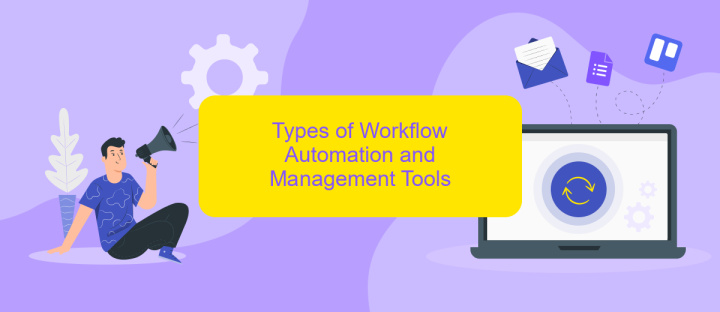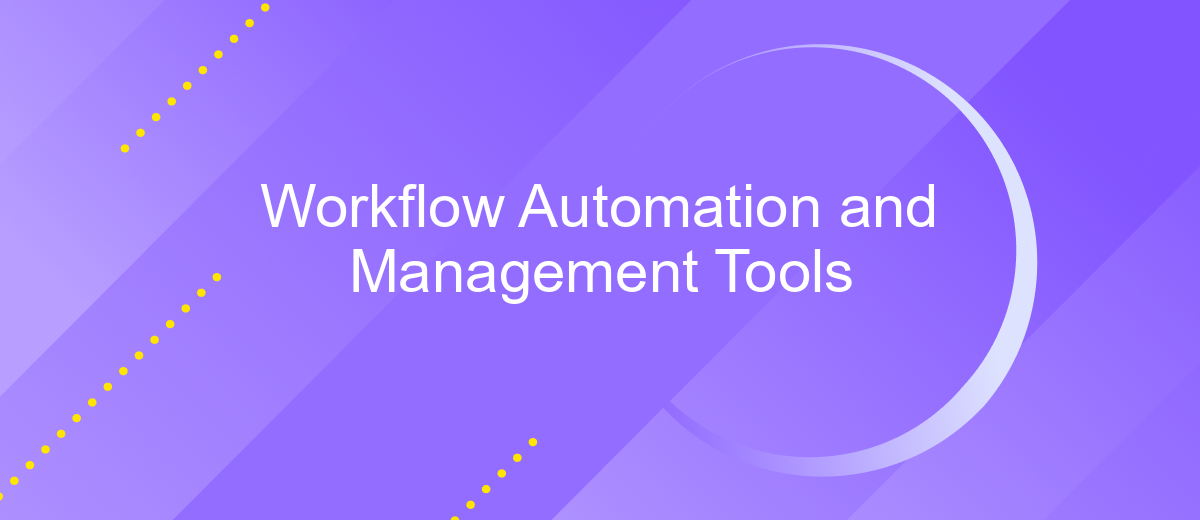Workflow Automation and Management Tools
In today's fast-paced business environment, efficiency and productivity are paramount. Workflow automation and management tools have emerged as essential solutions for streamlining operations, reducing manual tasks, and enhancing overall organizational performance. By leveraging these tools, businesses can optimize their processes, ensure consistency, and free up valuable time for innovation and strategic planning. This article explores the key benefits and features of these transformative technologies.
Introduction
Workflow automation and management tools are revolutionizing the way businesses operate by streamlining processes and enhancing productivity. These tools enable organizations to automate repetitive tasks, manage projects efficiently, and ensure seamless collaboration among team members. By leveraging workflow automation, companies can save time, reduce errors, and focus on more strategic activities.
- Automate repetitive tasks
- Enhance project management
- Ensure seamless collaboration
- Save time and reduce errors
One notable tool in this domain is ApiX-Drive, which facilitates the integration of various applications and services, allowing for smooth data transfer and automated workflows. With ApiX-Drive, businesses can easily connect their existing software, automate data synchronization, and create custom workflows tailored to their specific needs. This not only simplifies operations but also empowers teams to work more efficiently and effectively.
Benefits of Workflow Automation and Management Tools

Workflow automation and management tools offer a myriad of benefits to businesses, significantly enhancing operational efficiency. By automating repetitive tasks, these tools free up valuable time for employees, allowing them to focus on more strategic initiatives. This not only boosts productivity but also reduces the likelihood of human error, ensuring consistent and reliable outputs. Furthermore, workflow automation can lead to cost savings by minimizing the need for manual labor and streamlining processes.
Another key advantage is the ability to integrate various systems and applications seamlessly. Tools like ApiX-Drive facilitate this by providing easy-to-use integration services, enabling businesses to connect different platforms without the need for extensive coding knowledge. This ensures that data flows smoothly across all systems, improving collaboration and decision-making. Additionally, these tools often come with analytics features, offering insights into workflow performance and helping organizations to identify bottlenecks and areas for improvement.
Types of Workflow Automation and Management Tools

Workflow automation and management tools are essential for streamlining business processes and enhancing productivity. These tools help organizations automate repetitive tasks, manage workflows, and ensure that projects are completed efficiently. There are several types of workflow automation and management tools available, each catering to different business needs.
- Task Automation Tools: These tools automate routine tasks, such as data entry and email responses. Examples include Zapier and Microsoft Power Automate.
- Project Management Tools: These tools help manage project timelines, resources, and team collaboration. Popular options include Asana, Trello, and Monday.com.
- Integration Tools: These tools enable seamless integration between various applications and services. ApiX-Drive, for instance, allows businesses to connect different software systems, ensuring data flows smoothly between them.
- Business Process Management (BPM) Tools: These tools help design, execute, monitor, and optimize business processes. Examples include IBM BPM and Appian.
Choosing the right workflow automation and management tool depends on the specific needs and goals of your organization. By leveraging these tools, businesses can improve efficiency, reduce errors, and focus on more strategic tasks. Integration tools like ApiX-Drive play a crucial role in ensuring that all systems work together harmoniously, further enhancing overall productivity.
How to Choose the Right Workflow Automation and Management Tool

Choosing the right workflow automation and management tool is crucial for optimizing your business processes. Start by identifying your specific needs and objectives. Understand what tasks you want to automate and the outcomes you expect from implementing such a tool.
Next, consider the scalability and flexibility of the tool. Ensure it can grow with your business and adapt to changing requirements. Evaluate its user-friendliness and the learning curve for your team members.
- Features and functionalities
- Integration capabilities
- Cost and pricing model
- Customer support and reviews
Integration capabilities are particularly important. Tools like ApiX-Drive can help seamlessly connect various applications and services, making it easier to streamline workflows. Finally, read customer reviews and seek recommendations to ensure you choose a reliable and effective tool.
Implementation and Best Practices for Workflow Automation and Management Tools
Implementing workflow automation and management tools requires a strategic approach. Begin by identifying repetitive tasks and processes that can be automated. Engage stakeholders to understand their needs and ensure the selected tools align with organizational goals. Opt for user-friendly platforms that offer flexibility and scalability. Training sessions for staff are crucial to ensure seamless adoption. Regularly monitor and evaluate the performance of these tools to make necessary adjustments and improvements.
Best practices include integrating various applications to streamline workflows. Tools like ApiX-Drive can facilitate these integrations by connecting different software systems without extensive coding. This enhances data flow and reduces manual entry errors. Establish clear guidelines and documentation for using the tools to maintain consistency. Encourage feedback from users to continually refine and optimize the automated workflows. By following these practices, organizations can achieve greater efficiency and productivity.
FAQ
What is workflow automation?
How can workflow automation tools improve productivity?
What are some common features of workflow automation tools?
How do I integrate different applications for workflow automation?
Can small businesses benefit from workflow automation tools?
Time is the most valuable resource for business today. Almost half of it is wasted on routine tasks. Your employees are constantly forced to perform monotonous tasks that are difficult to classify as important and specialized. You can leave everything as it is by hiring additional employees, or you can automate most of the business processes using the ApiX-Drive online connector to get rid of unnecessary time and money expenses once and for all. The choice is yours!

